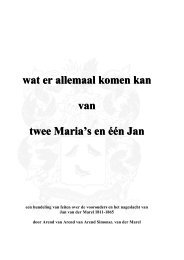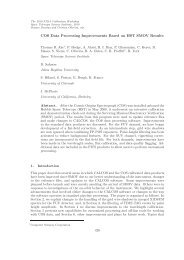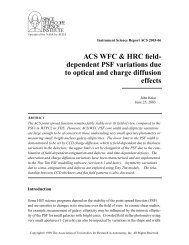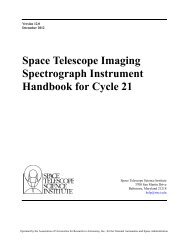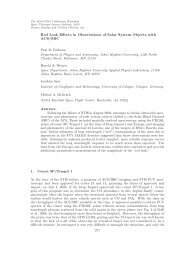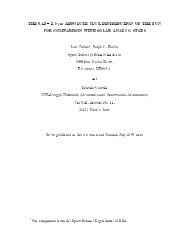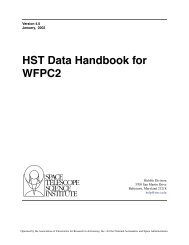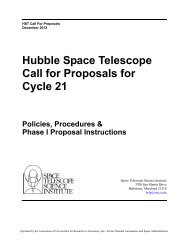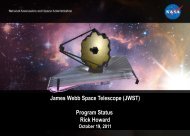STScI Annual Report 2002: A Living Mission
STScI Annual Report 2002: A Living Mission
STScI Annual Report 2002: A Living Mission
Create successful ePaper yourself
Turn your PDF publications into a flip-book with our unique Google optimized e-Paper software.
46 achievements<br />
Provide user support<br />
In <strong>2002</strong>, we improved our infrastructure to support users in making best use of Hubble data and opportunities<br />
to observe with Hubble. These improvements include upgrades to the Hubble web portal, new software<br />
for developing proposals, enhancements to the data analysis environment, and initiating user support for<br />
future instruments.<br />
We transitioned all instrument websites to the portal infrastructure established in 2001. This infrastructure<br />
features ‘process-oriented’ navigation and ‘dynamic’ generation of content, which increases utility<br />
and timeliness of information and reduces cost. The portal now includes an internal metrics site to track<br />
operational data.<br />
In Cycle 12, the Astronomer’s Proposal Tool (APT) became the only way to submit a proposal. Developed<br />
with strong community involvement and tested in previous cycles, APT has a sophisticated graphical interface,<br />
which allows users to see how their observations will be arranged on the sky. Written in the Java computer<br />
language, APT is supported on many computer operating systems, including Windows and Macintosh.<br />
In <strong>2002</strong>, we released a number of enhancements to our data-analysis environment and tools: PyRAF is<br />
our new Python-based command language for IRAF; ‘numarray’ is our IDL-like array package; and PyFITS is<br />
a FITS input-output module. We released STSDAS/TABLES v3.0, which includes PyDrizzle, a new module<br />
that handles drizzling automatically. We released Specview, a Java GUI application, which performs multicomponent<br />
fits of spectra.<br />
The Institute began WFC3 and COS user-support activities. We distributed the WFC3 and COS Instrument<br />
mini-Handbooks with the Cycle 12 Call for Proposals. Both groups responded to community questions through<br />
the Institute Help Desk, supported initial planning phases of the COS team science program, and actively<br />
provided information to the community about the instruments at American Astronomical Society meetings.<br />
Prepare for future science instruments<br />
The Institute develops both pre-observation and post-observation components of the ground system for<br />
new Hubble instruments, drawing on our experience and capabilities from previous instruments. In <strong>2002</strong>,<br />
our preparations advanced for the instruments to be installed in the next servicing mission, COS and WFC3.<br />
For the COS, we coordinated with the science team led by the Principal Investigator. The Institute<br />
successfully completed the scheduling system for all internal and external calibration and science exposure<br />
modes. We completed automatic and GO-specified wavelength calibration exposure capabilities, flat field<br />
exposures, and generalized support for specific science sub-exposures to remove fixed-pattern detector noise.<br />
We developed COS science data processing software on an expedited schedule to support instrument<br />
thermal vacuum testing, which will use the Institute pipeline and archive to process and store test data.<br />
We put in place the framework and initial implementation of the STSDAS-based COS calibration software<br />
suite (CALCOS).<br />
For the WFC3, we coordinated our activities with the GSFC Project Scientist for the instrument and with<br />
the WFC3 Science Oversight Committee, which provides input into WFC3 development from the astronomy<br />
community. Institute and GSFC scientists, organized as an ‘integrated product team’, provide day-to-day<br />
scientific support to the WFC3 project. In <strong>2002</strong>, the project installed key components and subsystems into<br />
the optical bench. The Institute assessed detectors for the infrared channel and planned for instrument<br />
calibration, operating the instrument, and developing flight and ground software. We completed all command<br />
database definitions and the instrument-reconfiguration command instructions. We implemented most of the<br />
instrument capabilities in the Hubble scheduling systems, which we have tested from proposal specification<br />
through to command-load generation, including all basic science and calibration capabilities for both the<br />
ultraviolet/visible and infrared channels of WFC3. We developed WFC3 science data processing software on<br />
an expedited schedule to support instrument thermal vacuum testing, which will use the Institute pipeline<br />
and archive to process and store test data. We put in place the framework and initial implementation of the<br />
STSDAS-based WFC3 calibration software suite.



